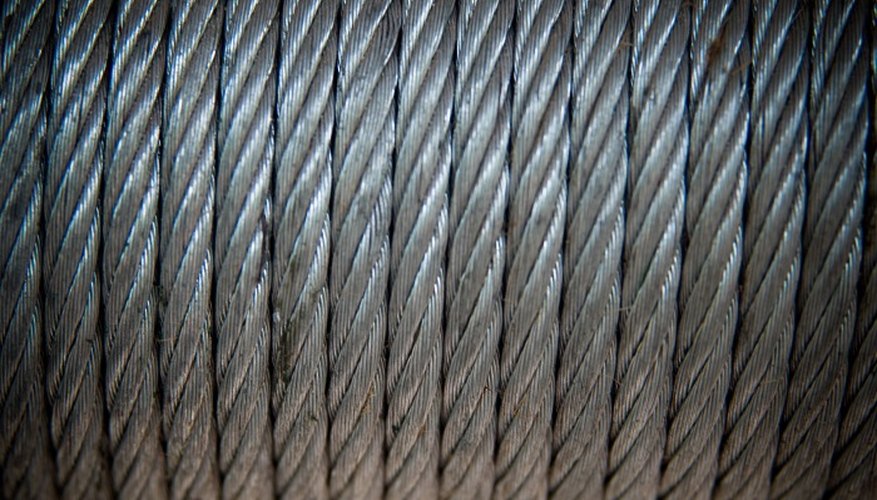Wire rope is an essential ingredient in most modern construction, and historically served a variety of purposes, leading to the development of shipping, railroading, elevators, telegraphs, mining, cable cars and aeroplanes. The earliest evidence of wire rope used in construction was found in the ancient ruins of Nineveh near Babylon, dating back to 700 B.C. Evidence of modern use of wire rope in structural elements can be seen in structures such as the Clifton Suspension Bridge.
Take measurements
Measure the length of the barrel and record it as the barrel diameter.
Measure the length from the top of one side of the flange to the bottom on the same side. Record as the flange diameter.
Measure the length of the space in between the top and bottom flanges, and record as the drum length.
- Measure the length of the barrel and record it as the barrel diameter.
- Measure the length of the space in between the top and bottom flanges, and record as the drum length.
Measure the distance between the top layer of the rope to the outside edge of the drum flange. Record the measurement as the freeboard measurement.
Measure the width of the cable and record.
Using an online calculator
Insert the recorded values into the appropriate spaces on the Ingersoll-Rand IR Drum Capacity Estimator (see Resources section).
Select the "Metric Unit of Measure" option located directly below the input fields.
- Insert the recorded values into the appropriate spaces on the Ingersoll-Rand IR Drum Capacity Estimator (see Resources section).
- Select the "Metric Unit of Measure" option located directly below the input fields.
Determine if your drum surface is smooth or grooved, and select the appropriate option located next to the "Unit of Measure" field.
Press "Calculate" button to calculate your total drum capacity, total working drum capacity, recommended working capacity, D/d ratio, minimum distance to lead sheave and maximum distance to lead sheave.
Estimating drum capacity
Find the K value of the wire rope diameter in inches.
Subtract the barrel diameter from the flange diameter. Divide this number by two to find value A.
Allow the barrel diameter to stand for value B.
Allow the drum length in between the flanges to stand for value C.
Insert the specific values into the following equation to estimate the approximate length of wire rope: (A + B) * A * C * K.
The result will be the approximate length of wire rope in centimetres.
TIP
Find the K value online for accurate values.
